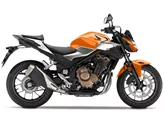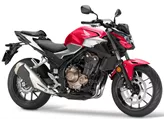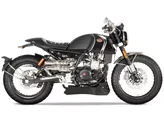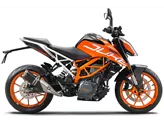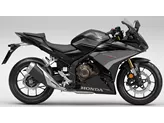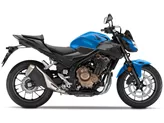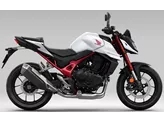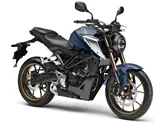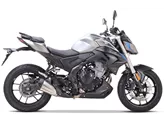Honda CB500F 2013 vs. Kawasaki ER-6n 2011

Honda CB500F 2013

Kawasaki ER-6n 2011
Vue d’ensemble - Honda CB500F 2013 vs Kawasaki ER-6n 2011
When comparing the Honda CB500F 2013 and the Kawasaki ER-6n 2011, several factors come into play. In terms of engine and drive train, both bikes have an in-line engine with liquid cooling. However, the Honda CB500F has a smaller engine displacement of 471ccm compared to the Kawasaki ER-6n's 649ccm. This results in a difference in engine power, with the Honda CB500F producing 48 HP while the Kawasaki ER-6n boasts 72 HP. Similarly, the torque of the Honda CB500F is 43 Nm, whereas the Kawasaki ER-6n offers 66 Nm of torque.
Moving on to the chassis, both bikes have a steel frame, providing stability and durability. The braking system on the Honda CB500F consists of a single disk with double piston, while the Kawasaki ER-6n features a double disk with double piston. This difference in braking systems may affect the overall braking performance of the bikes.
In terms of dimensions and weights, both bikes have the same front and rear tire widths of 120mm and 160mm, respectively. They also share the same wheelbase of 1410mm and seat height of 790mm. However, there is a slight difference in the kerb weight with ABS. The Honda CB500F weighs 192kg, while the Kawasaki ER-6n weighs slightly more at 208kg. Additionally, the fuel tank capacity of the Honda CB500F is 15.7 liters, whereas the Kawasaki ER-6n has a slightly smaller fuel tank capacity of 15.5 liters.

Honda CB500F 2013
Now, let's consider the strengths and weaknesses of each bike. The Honda CB500F has a relatively low overall weight, making it agile and providing nimble handling. Its chassis is acceptable, offering good comfort for the rider. The seating position of the Honda CB500F is successful, allowing for a comfortable ride. Additionally, the engine of the Honda CB500F is strong, providing ample power for various riding situations.
On the other hand, the Kawasaki ER-6n has the advantage of ABS, which enhances safety during braking. It also has wider handlebars, allowing for better maneuverability. The slimmer waist of the Kawasaki ER-6n adds to its overall aesthetics. Additionally, the bike offers increased intake noise, which can enhance the riding experience. The seat of the Kawasaki ER-6n is comfortable, ensuring a pleasant ride. Lastly, the chassis of the Kawasaki ER-6n is uncomplicated, making it easy to handle.

Kawasaki ER-6n 2011
In terms of weaknesses, the Honda CB500F may suffer from partially shoddy workmanship, which could affect its overall quality and durability. Additionally, it lacks a gear indicator, which can be inconvenient for riders who prefer to have this information readily available.
On the other hand, the Kawasaki ER-6n does not have any specific weaknesses mentioned.
In summary, the Honda CB500F 2013 and the Kawasaki ER-6n 2011 have their own strengths and weaknesses. The Honda CB500F offers a strong engine, nimble handling, and a successful seating position. However, it may suffer from shoddy workmanship and lacks a gear indicator. On the other hand, the Kawasaki ER-6n boasts ABS, wider handlebars, and a comfortable seat. It also has a slimmer waist and an uncomplicated chassis. Ultimately, the choice between these two bikes will depend on the rider's preferences and priorities.
Caractéristiques techniques Honda CB500F 2013 par rapport à Kawasaki ER-6n 2011
Avantages et inconvénients en comparaison
Avantages et inconvénients en comparaison
Honda CB500F 2013

De tels détails ne peuvent toutefois pas ternir la bonne image de la Honda CB500F. Dès les premiers mètres, il ne faisait aucun doute qu'elle serait un excellent choix pour une moto d'entrée de gamme. Mais le fait qu'elle puisse également répondre à des exigences plus élevées surprend un peu, surtout le moteur qui plaît par sa réactivité et son caractère poussif.
Kawasaki ER-6n 2011
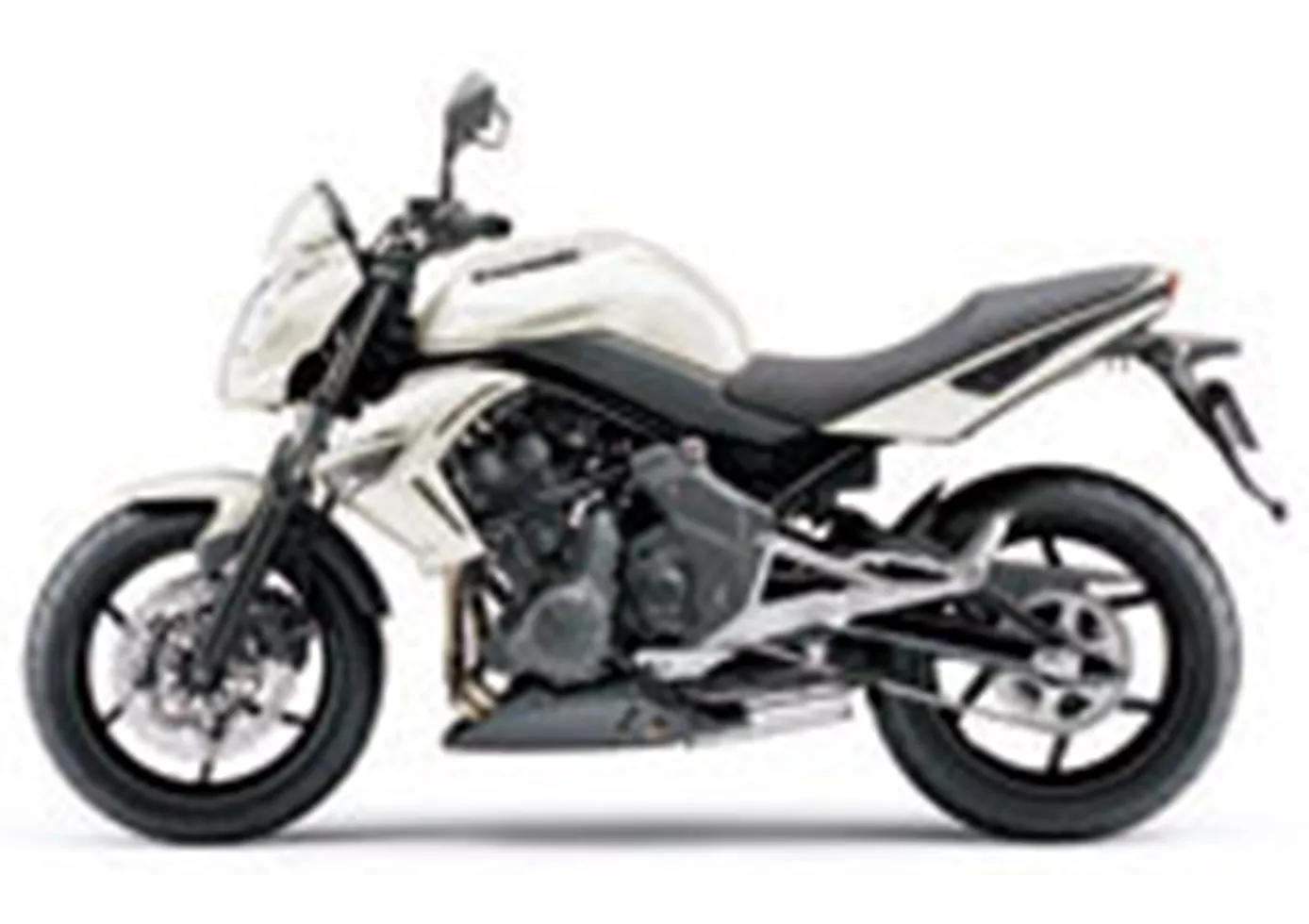
Un ensemble aussi cohérent avec des détails aussi fins n'existe nulle part ailleurs à ce prix. L'ER-6n a retrouvé un peu de piquant sur le plan visuel et dynamique et est plus amusante que jamais.
Comparaison des prix Prix moyen du marché Honda CB500F vs Kawasaki ER-6n
There are a few key differences between a Honda CB500F 2013 and a Kawasaki ER-6n 2011. In terms of price, the actual average price of a Honda CB500F 2013 is about 14% higher. A Honda CB500F 2013 experiences a loss of 530 USD in one year and 770 USD in two years of ownership. This is offset by a loss of 230 USD and 500 USD for a Kawasaki ER-6n 2011. There are the same number of bikes of both models available on the 1000PS.de marketplace, specifically 5. It takes less time to sell a Kawasaki ER-6n with 49 days compared to 54 days for the Honda CB500F. Since model year 2013 1000PS.de editors have written 22 reviews for the Honda CB500F and 16 reviews for the Kawasaki ER-6n since model year 2006. The first review for the Honda CB500F was published on 11/10/2012 and now has more than 18,500 views. This compares to more than 11,200 views for the first review on Kawasaki ER-6n published on 6/29/2005.









